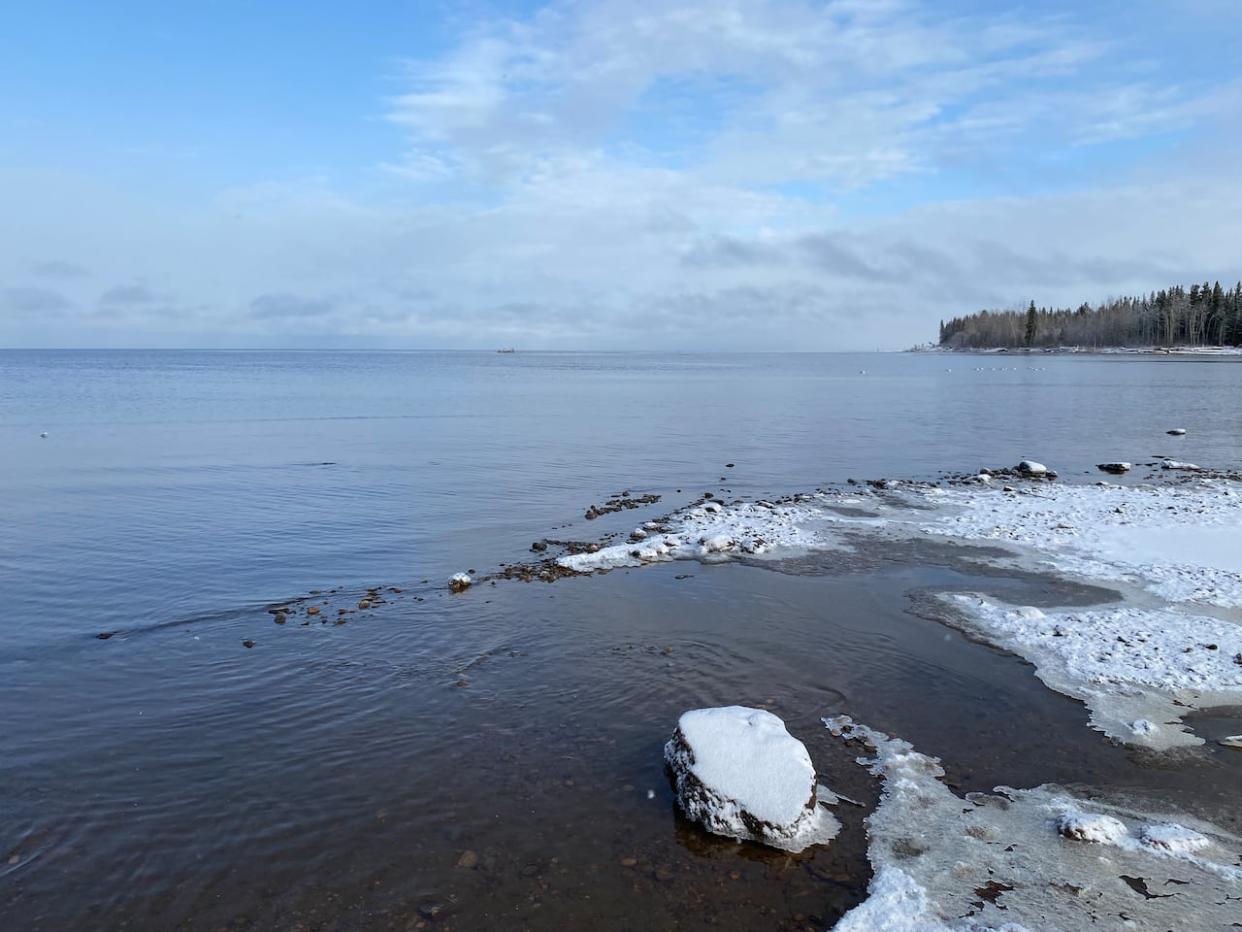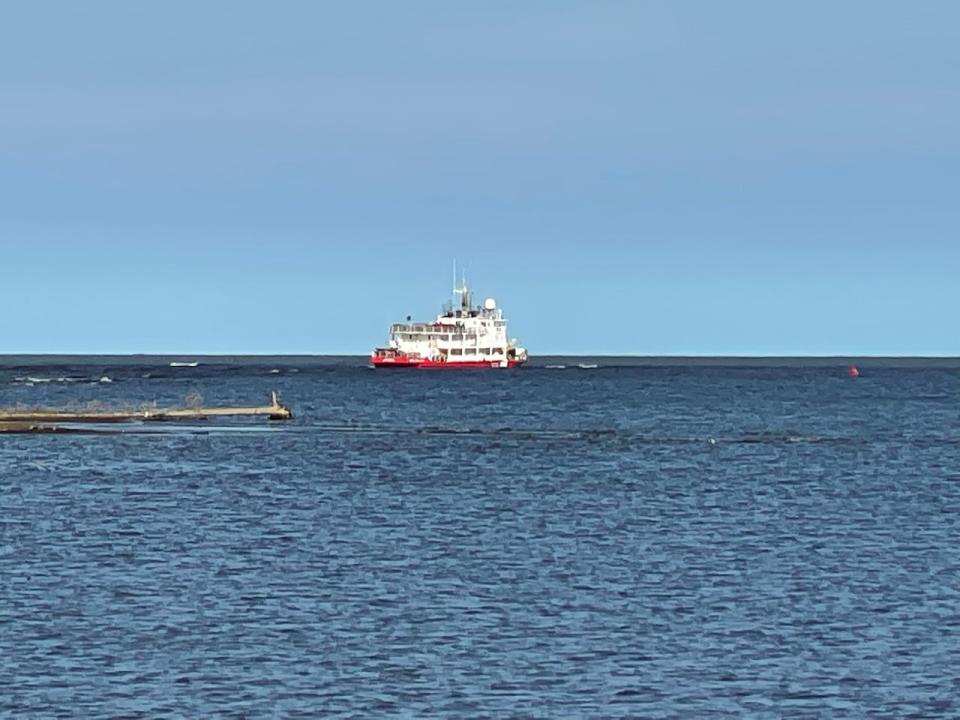Work to continue next year on dredging of harbour in Hay River, N.W.T.

The Northwest Territories Government has wrapped up work for the year to clear a channel to and from the Hay River harbour, where low water and sediment buildup have made shipping difficult. But more work will need to continue next summer to finish the job.
That's according to the territory's Department of Infrastructure.
The emergency channel is now 30 metres wide by 2.4 metres deep, the territory said in a news release, but most of the work focused on a few particularly difficult areas.
Work began in August, after years of complaints that the channel was becoming too shallow and difficult to navigate. A Coast Guard ship even became beached on a sand bar last fall.
Tracy St. Denis is a spokesperson for the N.W.T. Department of Infrastructure. She says the channel was so shallow and difficult to cross that smaller vessels had to taxi cargo across it before work began. She says even though the project is still ongoing, work done this fall will help.

A Coast Guard vessel ran aground on a sandbar in Hay River last year. (Jane Groenewegen)
"The fact that we were able to get some work done this year, even with the challenges around the devastation around Hay River having to be evacuated back in May, and then, of course, again in August, being able to continue that work in order to get us ready for next year will be extremely helpful," she said.
The work was completed on Oct. 7, the territory says, and had to stop as winter approached.
Infrastructure Minister Diane Archie said in a news release Wednesday that finishing this project is essential to ensuring fuel and other goods can be delivered.
"Restoring and maintaining the Hay River Harbour is important for the residents and businesses who use the harbour as well as for the N.W.T.'s essential community marine resupply activities," she said.
The territory has applied under Transport Canada's Oceans Protection Plan for funding for a multi-year project to fully restore the navigability of the harbour and channel.
The territory's Marine Transportation Services put out a release Wednesday saying all community resupplies were completed in 2023 despite challenges.
Aside from the Coast Guard and communities that rely on ships to get through with supplies — the harbour is home to the Marine Transportation Services' main terminal and a Coast Guard base — commercial fishers also rely on the Hay River harbour to be clear for safe passage. One commercial fisher told CBC last month he's nervous to put his boat in the water, lest he gets stuck.
Hay River Mayor Kandis Jameson has called the issue an "ongoing" one and a "political hot potato," ever since the federal government discontinued the national dredging program in the mid-1990s, passing off the responsibility to users of ports. The current dredging project received $3 million of funding through Crown-Indigenous Relations and Northern Affairs Canada.
The harbour was last dredged in 1997. The current project will remove approximately 84,000 cubic metres of sediment in the Hay River and the entrance to Great Slave Lake, the territory says.


